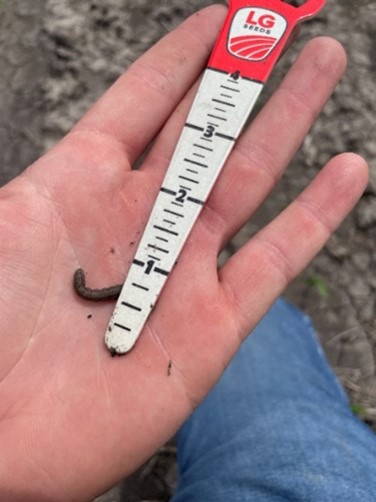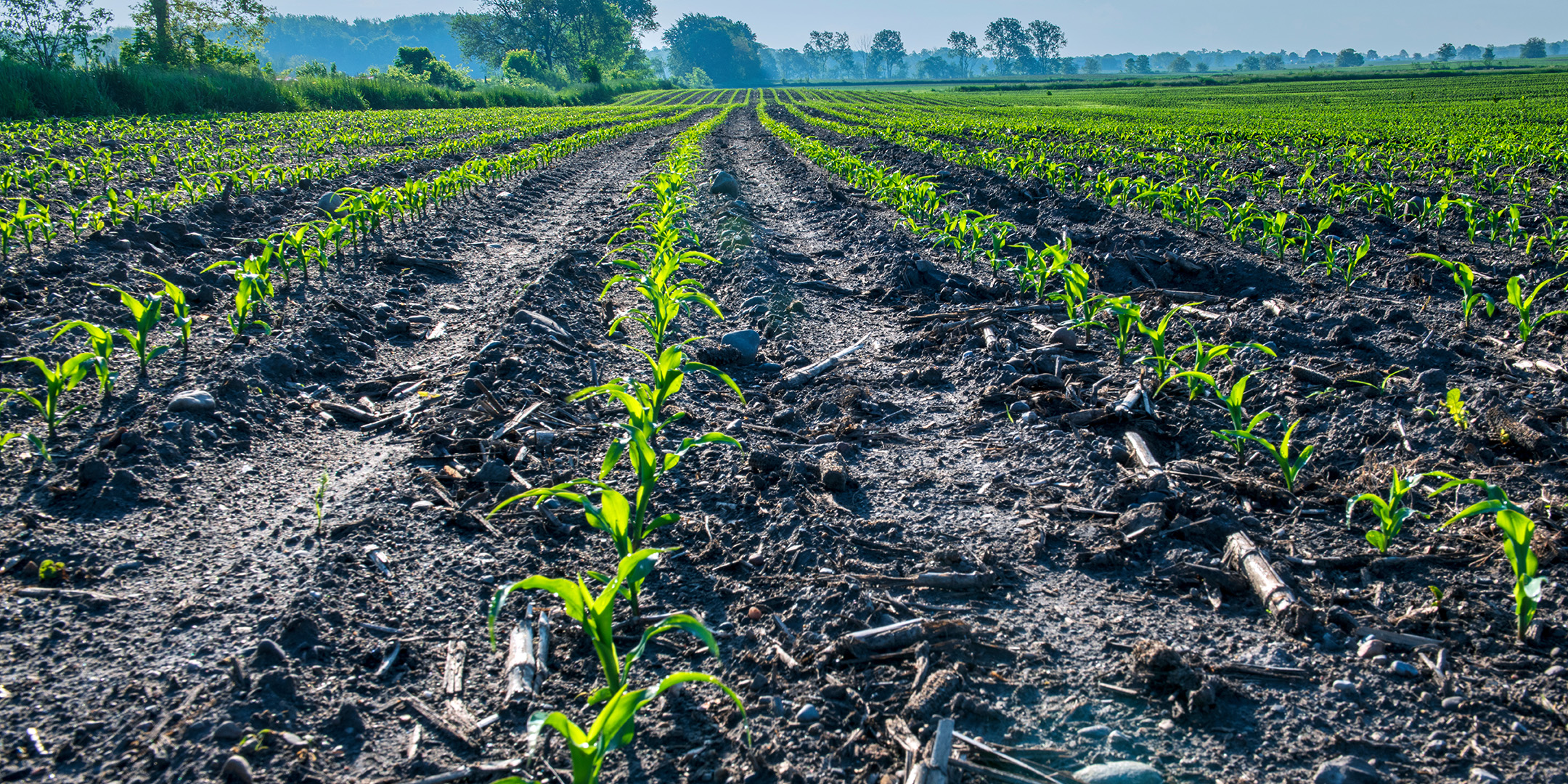AGRONOMICSUPPORT
YOU CAN TAKETO THE FIELD
Farmers Who Plant Late Should Be on Guard Against Black Cutworm
A wet spring delays not only planting, but also related fieldwork like tillage and herbicide applications. After a long, hard planting season made more stressful by weather delays, the last thing a farmer likely wants to do is get out in his or her fields and scout for pests.
But doing so is especially important in those years since the conditions can set the stage for heavy black cutworm pressure, says Brian Weihmeir, an LG Seeds agronomist in south-central Illinois.
“It was something we were keeping an eye out for in 2022, after a wet, cool spring delayed planting which contributed to heavy winter annual weed pressure in southern Illinois,” he says. He started fielding calls about the tell-tale snipped plants around Memorial Day.
Black cutworms snip corn plant

When cutworm moths return from overwintering to the south, they lay eggs in winter annuals and heavy vegetation. When the eggs hatch and the larvae start growing, cutworms, true to their name, cut the corn plant off “just like a pair of scissors right at the soil surface,” Weihmeir explains.
Black cutworms usually clip plants during the evenings or overcast days when it's a bit cooler. When it’s warm and sunny, they burrow into the soil. That’s why you’ll likely find a small hole about the size of a pencil a few inches away from a cut plant, Weihmeir says. “You can usually dig down with a trowel or a pocketknife, and a couple inches below the surface you’ll find the cutworms.”
The larvae are likely to be a gray or blackish color and “when you pick them up, they'll curl up into a ball,” Weihmeir says.
Black cutworms cause damage that’s not obvious from the road
Controlling black cutworm is challenging for two reasons: 1) the pest can cause a lot of damage quickly; and 2) cutworm damage occurs soon after planting.
“We usually start seeing cutworm damage mid- to late-May when farmers are just getting done planting,” Weihmeir explains.
Rather than doing a quick “windshield tour,” Weihmeir recommends growers get out of the vehicle and walk fields to check for black cutworms. Farmers should start scouting after planting and while corn plants are getting established, especially if they have heavy winter annual pressure and a cool spring.
Besides weedy fields, other high-risk areas for black cutworm include fields that had minimal tillage and poorly drained areas.

Depending on the growth stage of the crop, cutworms can cut corn plants above the growing point, which will keep the plant viable. “But these plants will be behind all season and yield less,” says Weihmeir.
“Plants cut below the growing point may wilt and die, causing plant population to become compromised,” he continues. “Work with your agronomist to evaluate the need to replant.”
Farmers should make note of the larvae size. “If you start digging your fields and find a couple of plants cut but the larvae are near full-size – 1 ½ inches to 2 inches long – they’re probably done feeding. But if we start seeing larvae that are less than an inch long and we’re seeing quite a bit of damage, that’s probably going to warrant a rescue treatment,” Weihmeir says.
Management and rescue treatment plans
The first priority for managing black rootworm is to keep corn fields clean, Weihmeir says
There are corn hybrids with above-ground traits like VT Double Pro®, Trecepta® and Viptera® that offer some control against black cutworm. But he warns producers against complacency. “Cutworms can still do damage if pressure is heavy enough,” he says. The story is similar for seed treatments.
When deciding if an insecticide application is warranted, there are many variables to consider, including the value of the crop.
The University of Minnesota Extension says the “generic economic threshold for black cutworm in corn is 2% to 3% of the plants cut or wilted when the larvae are less than 3/4 inch long. The threshold increases to 5% cut plants when larvae are larger.” Consult with your crop adviser for guidance.
The extension office also says farmers should consider corn populations in individual fields and adjust threshold numbers accordingly. Those with plant populations at or near yield-limiting levels can afford to lose fewer plants than fields with higher emerged populations.
“When considering a black cutworm rescue treatment, keep in mind that a lot of insecticides that control cutworm can also wipe out some beneficial insects,” Weihmeir says. He also recommends that if a farmer finds black cutworms in one field, they check all fields for the pest, noting “It’s better to be safe than sorry.”
If treatment is needed, farmers need to act fast. “If a farmer waits three or four days to make that rescue treatment, it could be too late,” Weihmeir warns. Therefore, he urges farmers to get their plan together now for protecting the crop.
Weihmeir says farmers fighting winter annuals year after year may need to review their tillage practices and herbicide plans or incorporate fall burndown to control weed pressure.
For more guidance on scouting for and protecting against black cutworm, reach out to your local LG Seeds agronomist.





